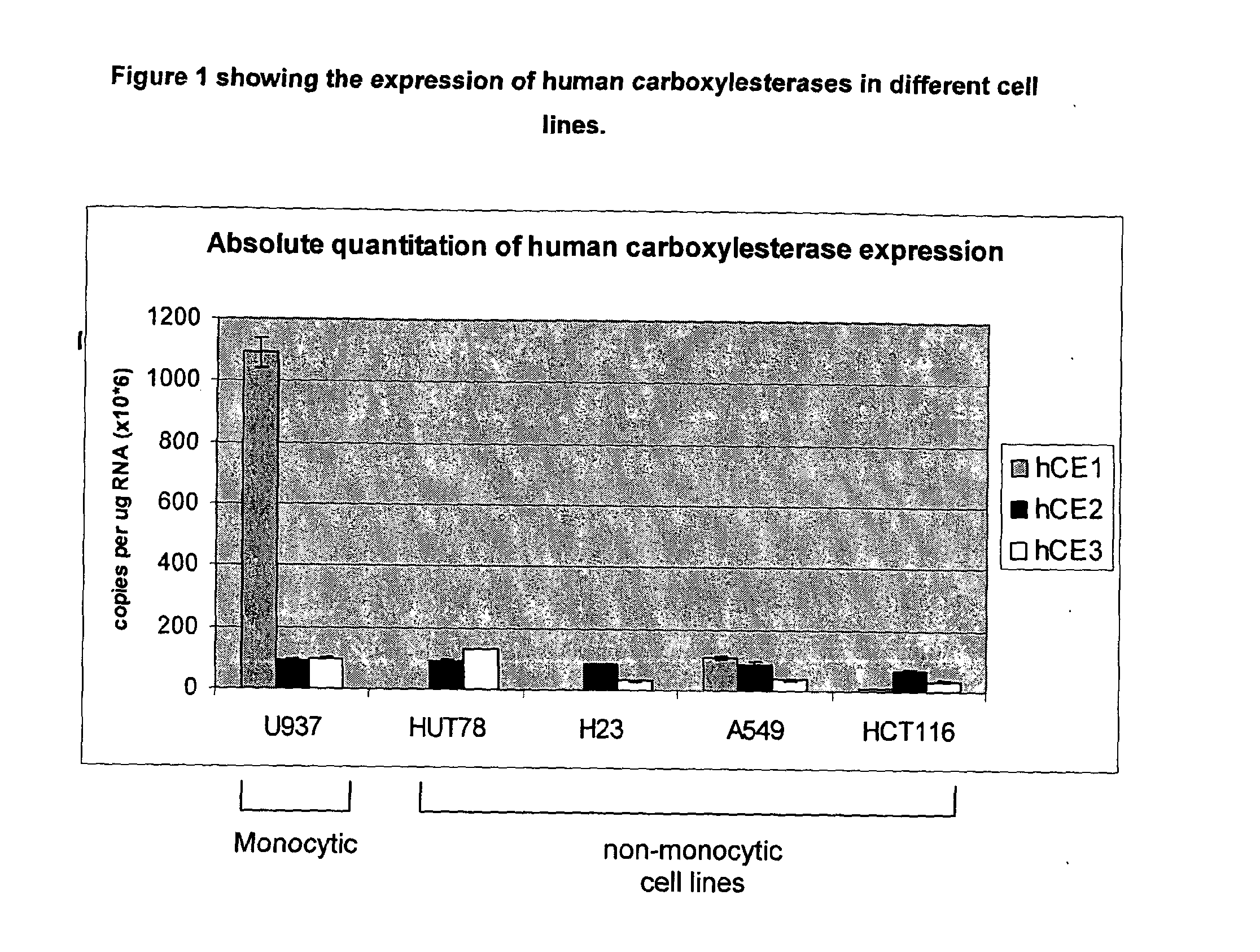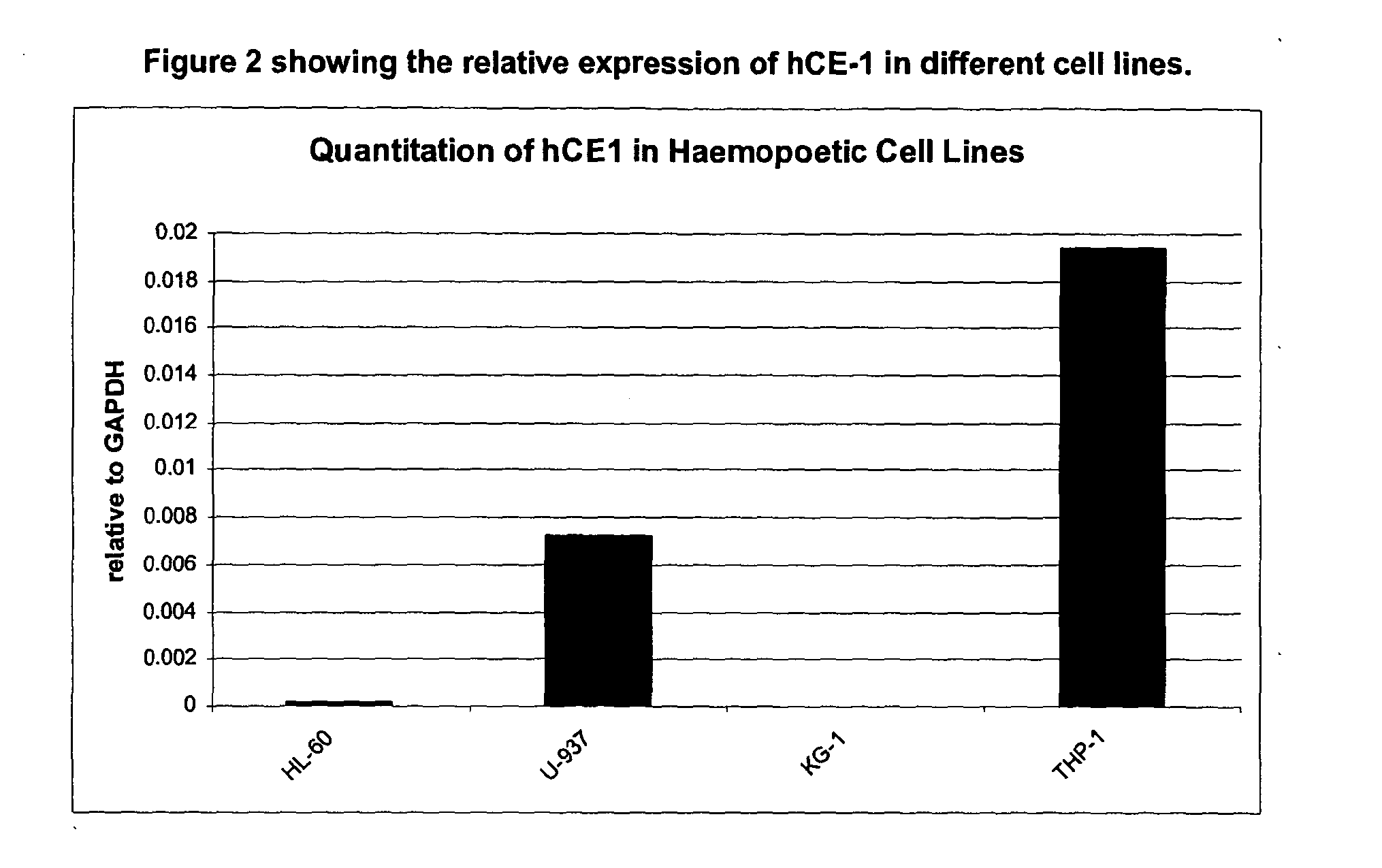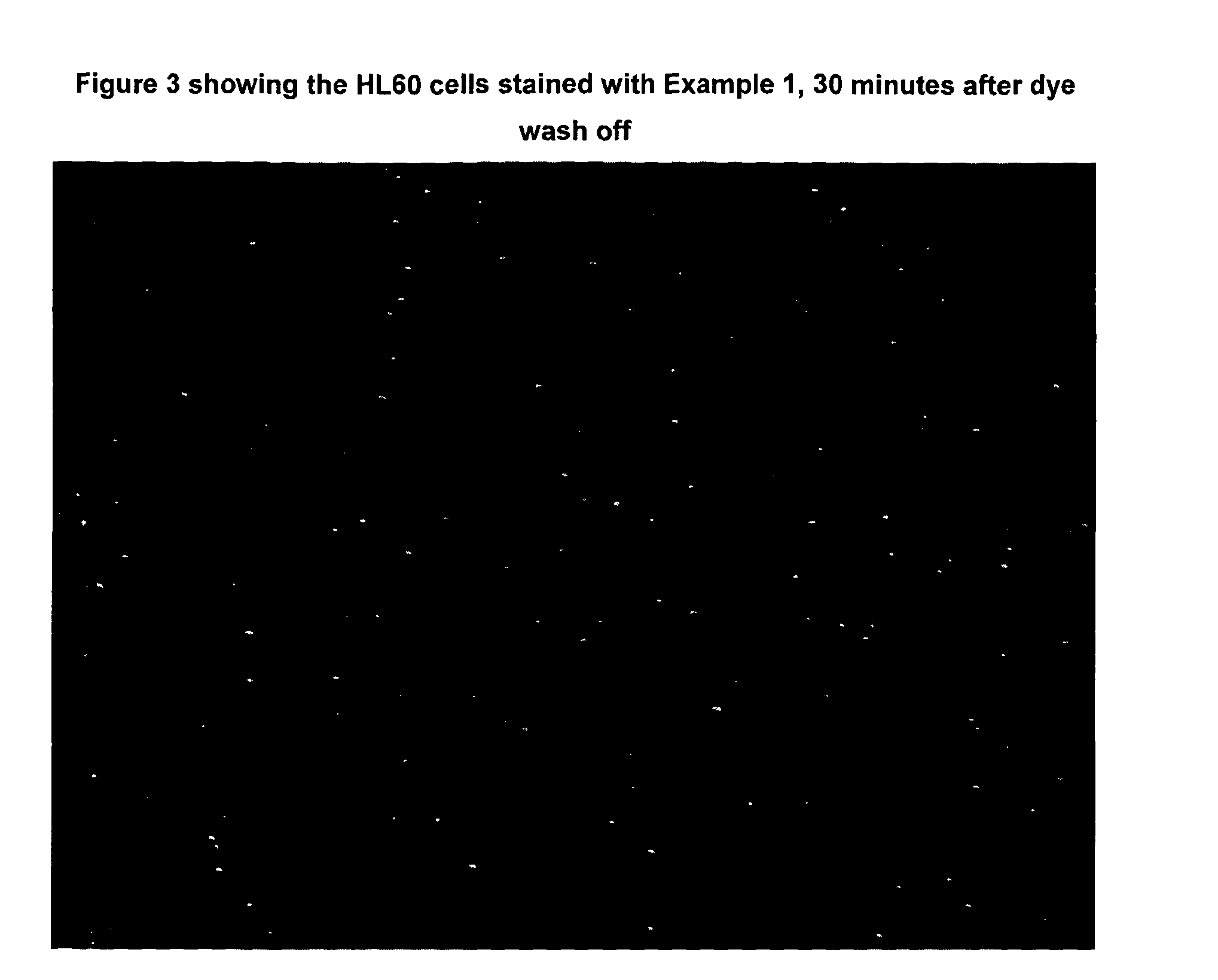Imaging agents
- Summary
- Abstract
- Description
- Claims
- Application Information
AI Technical Summary
Benefits of technology
Problems solved by technology
Method used
Image
Examples
example 1
Cyclopentyl (2S)-[(4-{3-[(7-nitro-2,1,3-benzoxadiazol-4-yl)amino]propoxy}benzyl)amino](phenyl)ethanoate
[0146]
[0147]The imaging agent Example 1 is a covalent conjugate of a fluorescent imaging agent and an alpha-substituted amino acid ester. Upon entry into cells, the amino acid ester motif is selectively hydrolysed by hCE-1 to the corresponding acid, having low cell permeability, thus causing the hydrolysed conjugate to selectively accumulate within cells having a significant expression of hCE-1, such as monocytic cells, for example macrophages.
preparation of example 1
[0148]The imaging agents of the invention, in particular Example 1, may be prepared, by the methods described below.
Synthesis
[0149]There are multiple synthetic strategies for the synthesis of the imaging agents with which the present invention is concerned, but all rely on known chemistry, known to the synthetic organic chemist. Thus, the imaging agents can be synthesised according to procedures described in the standard literature and are well-known to the one skilled in the art. Typical literature sources are “Advanced organic chemistry”, 4M Edition (Wiley), J March; “Comprehensive Organic Transformation”, 2nd Edition (Wiley), R. C. Larock; “Handbook of Heterocyclic Chemistry”, 2nd Edition (Pergamon), A. R. Katritzky; review articles such as found in “Synthesis”, “Acc. Chem. Res.”, “Chem. Rev”, or primary literature sources identified by standard literature searches online or from secondary sources such as “Chemical Abstracts” or “Beilstein”. The synthetic routes used in the prepa...
example 2
1,3,5,7-Tetramethyl-8-(4-cyclopentyl N-benzyl-L-leucinate)-4,4′-difluoroborodiazaindacene
[0208]
Stage 1—Cyclopentyl N-[4-(diethoxymethyl)benzyl]-L-leucinate
[0209]To Building Block A (5.35 g, 14.4 mmol) in DCE (20 mL) was added terephthaldehyde mono-diethyl acetal (2 g, 9.6 mmol). The reaction mixture was stirred at room temperature for 1 hour and then STAB (4.07 g, 19.2 mmol) was added portionwise and stirred at room temperature for 18 hrs. DCM (100 mL) was added and the reaction mixture washed with sat. NaHCO3 (2×100 mL), dried (MgSO4) and concentrated under reduced pressure. Purification by flash column chromatography (10%-25% EtOAc / Heptane) afforded the desired product as a colourless oil (1.85 g, 49% yield).
[0210]LC / MS: m / z 392 [M+H]+.
Stage 2—Cyclopentyl N-(4-formylbenzyl)-L-leucinate
[0211]To cyclopentyl N-[4-(diethoxymethyl)benzyl]-L-leucinate (1.85 g) in THF (10 mL) was added 1M HCl (10 mL). The reaction mixture was stirred at room temperature for 18 hrs for complete reaction. ...
PUM
 Login to View More
Login to View More Abstract
Description
Claims
Application Information
 Login to View More
Login to View More - Generate Ideas
- Intellectual Property
- Life Sciences
- Materials
- Tech Scout
- Unparalleled Data Quality
- Higher Quality Content
- 60% Fewer Hallucinations
Browse by: Latest US Patents, China's latest patents, Technical Efficacy Thesaurus, Application Domain, Technology Topic, Popular Technical Reports.
© 2025 PatSnap. All rights reserved.Legal|Privacy policy|Modern Slavery Act Transparency Statement|Sitemap|About US| Contact US: help@patsnap.com



